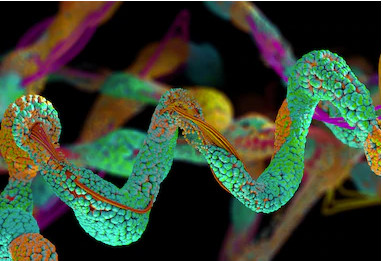The tiny world of peptides

Many commonly available cosmetic and health products contain peptides – but what actually are they and what do they do in the human body?
Published 14 October 2020
“As humans we tend to think in pictures, so using that approach you could think of peptides as segments of protein,” says Dr Troy Attard, from the Melbourne Protein Characterisation platform at the Bio21 Institute at the University of Melbourne.
“You can think of protein like a ball of twine, a long linear string that is all scrunched up into a ball or various shapes. If you took a pair of scissors and snipped little bits of a segment of that string, that would be your peptide,” Dr Attard says.
“They’re basically short proteins, which are chains of amino acids that are joined head to tail, a little bit like links in a chain.”
Dr Attard explains that insulin is an example of a peptide, it’s two peptide chains that are joined by a couple of bridges. “There are a lot of small proteins that you would consider peptides and they have all manner of functions in the body including metabolism and communication.”
Dr Attard synthesises, or makes, specific peptides for research.
“You can manipulate peptides for whatever purpose you’d like. If you want to investigate specific parts of a protein, you can make a whole range of peptides that represent that area, and you can test which ones are important for binding in the cell.”
Just by doing this basic research, you can build up a profile, and you get more knowledge about the interactions that are going on in the cell, Dr Attard says.
“When you come across a problem such as the classic one is cancer of course, the more you know about that mechanism, the better a position you’ll be in to develop a therapeutic, for example.”
Episode recorded: September 29, 2020.
Interviewer: Dr Andi Horvath.
Producer, audio engineer and editor: Chris Hatzis.
Co-producers: Silvi Vann-Wall and Dr Andi Horvath.
Banner image: Shutterstock
